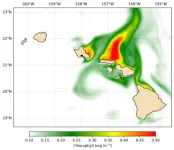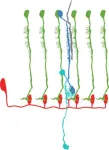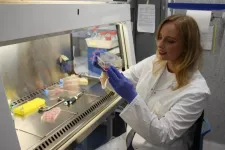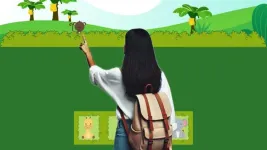(Press-News.org) Macrophage cells are the immune system’s frontline soldiers, early on the scene to protect the body from foreign invaders. These cells answer the immune system's critical question for the rest of its troops: friend or foe?
As critical responders, macrophages can perceive helpful biotechnology as threats. If not created with the right materials or mechanical forces, these devices can trigger an immune response that can cause inflammation, scar tissue or device failure.
But what is the right material or the right mechanical force? In a meta-analysis co-led by Dr. Abigail Clevenger, a biomedical engineering graduate student at Texas A&M University, researchers emphasize that context matters.
“Not any one force does the same thing to macrophages everywhere in the body,” said Dr. Shreya Raghavan, co-author and biomedical engineering assistant professor. “For example, your lung inflates and deflates, so the macrophage in the lung is already used to those forces and has some adaptations to those mechanics. But what a macrophage in the lung adapts to is different from what a macrophage in the uterus or gut adapts to.”
Now a postdoctoral fellow, Clevenger co-led the article with Dr. Aakanksha Jha, a University of Maryland postdoctoral fellow. Jha's advisor, Dr. Erika Moore, was also a senior author on the study. The article, published in Trends in Biotechnology, highlights the need to understand macrophage cell behavior to potentially open doors for new or improved biotechnology and targeted immunotherapy treatments.
“When you design immunotherapy for colorectal cancer, for example, you can't just design a solution in a dish where there's no mechanics,” said Raghavan. “Mechanics change the way macrophages behave. Your design solutions must take into account that these are mechanosensitive cells. The consequence of not doing so means that the very same macrophage that can help devices function in the body may also perceive harmful tumors as friends and allow them to propagate.”
According to Raghavan, the review critically summarizes advances in research findings in interactions between biotechnologies and macrophages from the past four years.
“We felt like there was a critical mass in scientific advancement that we were excited to put it together,” she said. “Even five years ago, this was a significant knowledge gap, but with integrated tools between biomedical and tissue engineering and molecular and computational biology, there is so much more data. It's beautiful.”
In a more personal application, Raghavan wears a continuous glucose monitor that she switches out every two weeks due to the immune system response to the foreign materials eventually making the readings unreliable. She hopes the knowledge gained through the review article can help her lab better determine steps for adjusting medical devices – like the continuous glucose monitor – for an improved immune response.
“It's not a one-size-fits-all; you have to take everything into context, but that's the power and beauty of engineering,” Raghavan said. “You can break it down and study fundamentals, then build it back up in complexity.”
By Bailey Noah, Texas A&M Engineering
###
END
Immune system review provides insight into more effective biotechnology
New study synthesizes research findings to improve medical devices and therapy success rate.
2024-10-31
ELSE PRESS RELEASES FROM THIS DATE:
Remote control eddies: Upwelled nutrients boost productivity around Hawaiian Islands
2024-10-31
Beyond colorful coral reefs and diverse nearshore ecosystems, Pacific Ocean waters surrounding the Hawaiian Islands have comparatively little marine life and low biological productivity. New research published by University of Hawai‘i (UH) at Mānoa oceanographers showed that eddies on the leeward side of the Hawaiian Islands can supply nutrients, not only locally, but also to the opposite side of the island chain and stimulate blooms of phytoplankton, microscopic plant life that lives in the surface ocean.
The study, published in JGR Oceans, was selected by the American Geophysical Union’s editorial board as a featured article.
“While ...
Rice, Texas Medical Center institutions jointly award seed grants
2024-10-31
Rice University together with Baylor College of Medicine and the Houston Methodist Academic Institute has awarded seed grants in support of research on health equity and digital health.
Spearheaded by Rice’s Educational and Research Initiatives for Collaborative Health (ENRICH) office in collaboration with the two partnering institutions in the Texas Medical Center (TMC), the seed grant opportunity followed the Health Equity Workshop hosted earlier this year by Rice’s Digital Health Initiative.
“To achieve equitable health outcomes, a comprehensive approach is essential — one ...
Sleeping for 2: Insomnia therapy reduces postpartum depression, study shows
2024-10-31
While many people believe that poor sleep during pregnancy is inevitable, new research has determined that cognitive behavioral therapy for insomnia (CBTi) while pregnant can not only improve sleep patterns but also address postpartum depression.
Researchers from UBC’s Okanagan and Vancouver campuses, as well as the University of Calgary, discovered that delivering CBTi during pregnancy significantly reduces postpartum depressive symptoms after a baby arrives.
“Early intervention is crucial for infant and parental mental health,” says Dr. Elizabeth Keys, an Assistant Professor in UBCO’s School of Nursing and a study co-author. “Our research explores how addressing ...
How fruit flies achieve accurate visual behavior despite changing light conditions
2024-10-31
When light conditions rapidly change, our eyes have to respond to this change in fractions of a second to maintain stable visual processing. This is necessary when, for example, we drive through a forest and thus move through alternating stretches of shadows and clear sunlight. "In situations like these, it is not enough for the photoreceptors to adapt, but an additional corrective mechanism is required," said Professor Marion Silies of Johannes Gutenberg University Mainz (JGU). "Earlier work undertaken by her research group had already demonstrated that such a corrective 'gain control' mechanism exists ...
First blueprint of the human spliceosome revealed
2024-10-31
Researchers at the Centre for Genomic Regulation (CRG) in Barcelona have created the first blueprint of the human spliceosome, the most complex and intricate molecular machine inside every cell. The scientific feat, which took more than a decade to complete, is published today in the journal Science.
The spliceosome edits genetic messages transcribed from DNA, allowing cells to create different versions of a protein from a single gene. The vast majority of human genes – more than nine in ten – are edited by the spliceosome. Errors in the process are linked to a wide spectrum of diseases including most types of cancer, neurodegenerative conditions and genetic ...
The harmful frequency and reach of unhealthy foods on social media
2024-10-31
An analysis of social media posts that mention food and beverage products finds that fast food restaurants and sugar sweetened beverages are the most common, with millions of posts reaching billions of users over the course of a year. The study, published in the open access journal PLOS Digital Health, highlights the sheer volume of content normalising unhealthy eating, and argues that policies are needed to protect young people in the digital food environment.
Obesity is a health challenge around the world and food environments, including in the digital space, can influence ...
Autistic traits shape how we explore
2024-10-31
People with stronger autistic trails showed distinct exploration patterns and higher levels of persistence in a computer game, ultimately resulting in better performance than people with lower scores of autistic traits, according to a new study published this week in PLOS Computational Biology by Francesco Poli of Radboud Universiteit, the Netherlands, and colleagues.
Scientists know that individuals display curiosity and explore their environments to learn. How a person selects what they want to explore plays a pivotal role in how they learn and research has shown that exploration levels are highly variable across ...
UCLA chemists just broke a 100-year-old rule and say it’s time to rewrite the textbooks
2024-10-31
Key takeaways
According to Bredt's rule, double bonds cannot exist at certain positions on organic molecules if the molecule's geometry deviates too far from what we learn in textbooks.
This rule has constrained chemists for a century.
A new paper in Science shows how to make molecules that violate Bredt’s rule, allowing chemists to find practical ways to make and use them in reactions.
UCLA chemists have found a big problem with a fundamental rule of organic chemistry that has been around for 100 years — it’s ...
Uncovered: the molecular basis of colorful parrot plumage
2024-10-31
A single enzyme fine-tunes red and yellow pigments in parrots’ polychromatic plumage, according to a new study. The findings reveal new insights into the molecular mechanisms underlying the evolution and display of color variation in one of nature’s most colorful birds. Colors play a central role in ecological adaptation and communication in the natural world. This is particularly true for birds, which are especially notable among animals for their wide range of vibrant plumage colors and patterns. Among birds, ...
Echolocating bats use acoustic mental maps to navigate long distances
2024-10-31
By blindfolding Kuhl's pipistrelle bats and tracking their movements with novel GPS technology, researchers show that the tiny creatures can navigate over several kilometers using only echolocation. The findings highlight the animal’s ability to create and use detailed mental acoustic maps of their surroundings. Echolocating bats are known for their ability to nimbly avoid obstacles and catch tiny prey using only sound. However, echolocation is short-ranged and highly directional, allowing for the detection of large objects within only a few dozen meters, limiting its effectiveness for navigation compared to other senses, like vision. ...
LAST 30 PRESS RELEASES:
Heart-brain connection: international study reveals the role of the vagus nerve in keeping the heart young
Researchers identify Rb1 as a predictive biomarker for a new therapeutic strategy in some breast cancers
Survey reveals ethical gaps slowing AI adoption in pediatric surgery
Stimulant ADHD medications work differently than thought
AI overestimates how smart people are, according to HSE economists
HSE researchers create genome-wide map of quadruplexes
Scientists boost cell "powerhouses" to burn more calories
Automatic label checking: The missing step in making reliable medical AI
Low daily alcohol intake linked to 50% heightened mouth cancer risk in India
American Meteorological Society announces Rick Spinrad as 2026 President-Elect
Biomass-based carbon capture spotlighted in newly released global climate webinar recording
Illuminating invisible nano pollutants: advanced bioimaging tracks the full journey of emerging nanoscale contaminants in living systems
How does age affect recovery from spinal cord injury?
Novel AI tool offers prognosis for patients with head and neck cancer
Fathers’ microplastic exposure tied to their children’s metabolic problems
Research validates laboratory model for studying high-grade serous ovarian cancer
SIR 2026 delivers transformative breakthroughs in minimally invasive medicine to improve patient care
Stem Cell Reports most downloaded papers of 2025 highlight the breadth and impact of stem cell research
Oxford-led study estimates NHS spends around 3% of its primary and secondary care budget on the health impacts of heat and cold in England
A researcher’s long quest leads to a smart composite breakthrough
Urban wild bees act as “microbial sensors” of city health.
New study finds where you live affects recovery after a hip fracture
Forecasting the impact of fully automated vehicle adoption on US road traffic injuries
Alcohol-related hospitalizations from 2016 to 2022
Semaglutide and hospitalizations in patients with obesity and established cardiovascular disease
Researchers ‘listen in’ to embryo-mother interactions during implantation using a culture system replicating the womb lining
How changing your diet could help save the world
How to make AI truly scalable and reliable for real-time traffic assignment?
Beyond fragmented markets: A new framework for efficient and stable ride-pooling
Can shape priors make road perception more reliable for autonomous driving?
[Press-News.org] Immune system review provides insight into more effective biotechnologyNew study synthesizes research findings to improve medical devices and therapy success rate.




